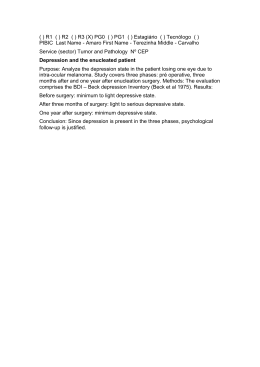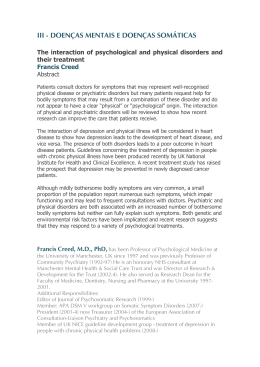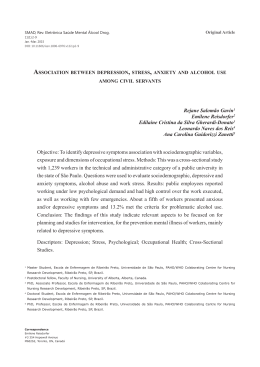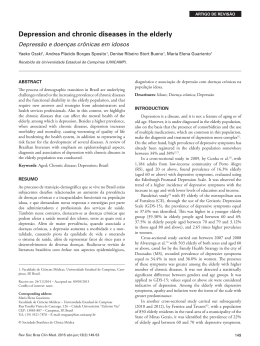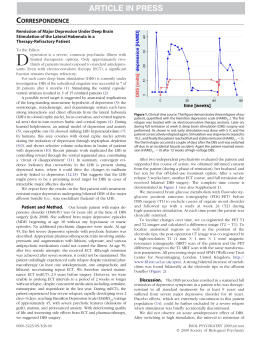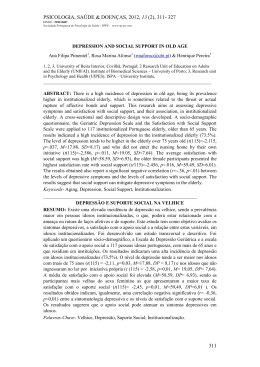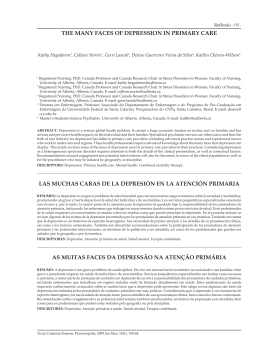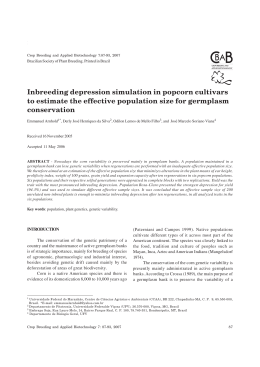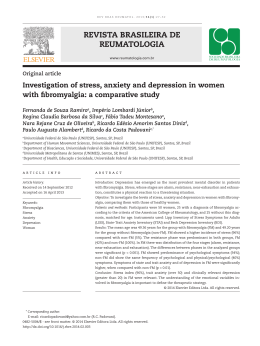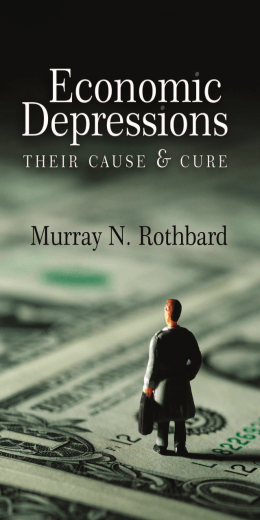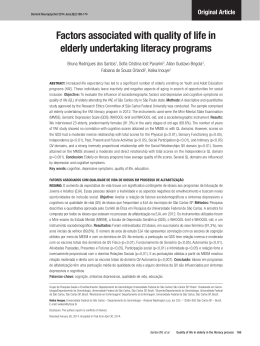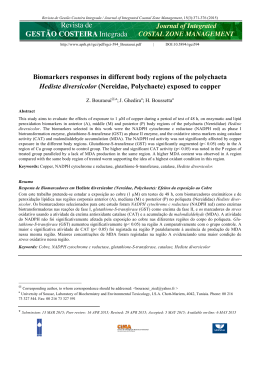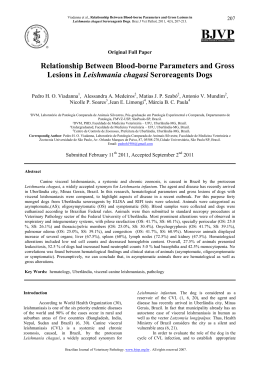CLINICS 2011;66(2):233-238 DOI:10.1590/S1807-59322011000200009 CLINICAL SCIENCE Psychiatry - life events and social support in late life depression Clóvis Alexandrino-Silva,I,III Tânia Ferraz Alves,II,III Luı́s Fernando Tófoli,IV Yuan-Pang Wang,I Laura Helena AndradeI I Section of Psychiatry Epidemiology - LIM 23, Institute and Department of Psychiatry, Medical School, University of São Paulo, São Paulo, SP, Brazil. Department of Psychiatry, Medical School, University of São Paulo, São Paulo, SP, Brazil. III Department of Psychiatry, Medical School, Fundação do ABC, Santo André, SP, Brazil. IV School of Medicine, Federal University of Ceará, Sobral Campus, Sobral, CE, Brazil. II OBJECTIVES: To examine the association of life events and social support in the broadly defined category of depression in late life. INTRODUCTION: Negative life events and lack of social support are associated with depression in the elderly. Currently, there are limited studies examining the association between life events, social support and late-life depression in Brazil. METHODS: We estimated the frequency of late-life depression within a household community sample of 367 subjects aged 60 years or greater with associated factors. ‘‘Old age symptomatic depression’’ was defined using the Composite International Diagnostic Interview 1.1 tool. This diagnostic category included only late-life symptoms and consisted of the diagnoses of depression and dysthymia as well as a subsyndromal definition of depression, termed ‘‘late subthreshold depression’’. Social support and life events were assessed using the Comprehensive Assessment and Referral Evaluation (SHORT-CARE) inventory. RESULTS: ‘‘Old age symptomatic depression’’ occurred in 18.8% of the patients in the tested sample. In univariate analyses, this condition was associated with female gender, lifetime anxiety disorder and living alone. In multivariate models, ‘‘old age symptomatic depression’’ was associated with a perceived lack of social support in men and life events in women. DISCUSSION: Social support and life events were determined to be associated with late-life depression, but it is important to keep in mind the differences between genders. Also, further exploration of the role of lifetime anxiety disorder in late-life depression may be of future importance. CONCLUSIONS: We believe that this study helps to provide insight into the role of psychosocial factors in late-life depression. KEYWORDS: Depression; Ageing; Life Events; Social Support; Elderly; Brazil. Alexandrino-Silva C, Alves TF, Tófoli LF, Wand YP, Andrade LH. Psychiatry - life events and social support in late life depression. Clinics. 2011;66(2):233-238. Received or publication on August 28, 2010; First review completed on September 20, 2010; Accepted for publication on November 3, 2010 E-mail: [email protected] Tel.: 55 11 3069-6976 little consensus on the role of social support and life events in different communities and socioeconomically disadvantaged groups. In Latin American and the Caribbean, ageing has grown in recent decades due to factors such as mortality decline and as a result of successful medical techniques that, for example, contributed towards the reduction in the spread of infectious diseases.5 Additionally, the speed and size of this process indicates that it takes place in the context of fragile economies, high levels of poverty, and social and economic inequalities.6 Brazil also presents these patterns, and the most current data from the Brazilian Institute of Geography and Statistics (IBGE) indicate that its population consists of more than 180 million inhabitants, with those aged 60 years or older representing roughly 10% of the country’s population.7 INTRODUCTION Population-based studies in Latin American and Caribbean countries have described the sizeable impact of mental illness in this region with one-year prevalence rates of 1.0% for nonaffective psychosis, 4.9% for major depression, and 5.7% for alcohol use, abuse or dependence.1 In developing countries, there are isolated reports on the frequency of depression in elderly people,1-4 but there is Copyright ß 2011 CLINICS – This is an Open Access article distributed under the terms of the Creative Commons Attribution Non-Commercial License (http:// creativecommons.org/licenses/by-nc/3.0/) which permits unrestricted noncommercial use, distribution, and reproduction in any medium, provided the original work is properly cited. 233 Psychiatry - life events and social support Alexandrino-Silva C et al. CLINICS 2011;66(2):233-238 services in the population aged 18 years or older living in the catchment area of a large hospital complex in the city of São Paulo, Brazil. A representative sample of 1,464 subjects, 18 years old or more were interviewed in households, with a response rate of 76.8%. An over-sampling of individuals 60 years old or more was performed in order to increase the probability of getting old age psychopathology (we interviewed all the residents within the stratum 60 years old or more living in the household selected). Although for most of the analyses performed in this sample weights were used to adjust for the differential effects of oversampling and no response,18 in the present report those weights were not used. This is due to the design chose for the analyses presented herein, a nested case-control study, for the assessment of factors associated with the presence of depressive symptomatology in old age. Depression in late life is a severe problem for the elderly.8,9 The Bambuı́ Health Ageing Study, carried out in the southeast of Brazil, reported a 1-month prevalence of depressive episode of 15.4% in a representative community elderly sample,3 and Blay et al.2 found a 1-month prevalence of depression morbidity of 22.7% in a cross-sectional study of non-institutionalized people aged 60 years or more in the southern area of the country. Population-based studies suggest a substantial relationship between social factors and depression in late life.10 Research has begun to look at the potential effects of the social support system on an individual’s susceptibility to developing late onset depression.8 A meta-analysis conducted by Kraaij et al.11 investigated the relationship of negative life events and depression in old age. The authors observed that an accumulation of negative stressful events and daily hassles were associated to the presence of a modest, but significant effect size. Fiske et al.12 also suggested that both negative life events may predict depressive symptoms, and that depressive symptoms may predict negative life events in the future, in a circle that one condition interfere and contribute to sustained the other. Besides adverse life events, poor social support is a known risk factor for development of depression.10 Social support is a coping resource that is obtained from interpersonal relationships, whose protective effects are well documented in the literature regarding its role in maintaining health and decreasing vulnerability to physical and mental illnesses in older adults,13 as well as contributing to buffer the adverse psychological effects created by stress.14 Koizumi et al.15 found an increased risk of depression status in subjects who lack social support in the Japanese population. Both life events and social support have been described as predictors to long-term depressive outcome. Leskelä et al.16 verified that both adverse life events and poor perceived social support predicted the outcome of subjects with major depression. In this context, it is of interest to understand the role of certain social predictors in the mental health of Brazilian seniors. Castro-Costa examining a series of indicators of social support network as determinants of depressive symptoms in a sample of community-dwelling in a small city in Brazil, found no association of social support with depressive symptoms assessed through a rating scale with low specificity.17 Due to the scarcity of studies investigating the association of life events and social support in late depression in Brazilian population-based samples, the present study provides an opportunity to examine these associations. Thus, the aim of this study is to examine possible effects of life events and social support in depression presented in elderly subjects that were living in two middleclass boroughs in the city of São Paulo, Brazil. For the purpose of this study, we only considered those individuals 60 years old or more and evaluated whether current social support and life events occurring in the 2 years prior to the interview were predictors of depression in older adults. Diagnostic Assessment The Composite International Diagnostic Interview version 1.1 (CIDI 1.1), translated to Portuguese, was used to assess psychopathology. The CIDI is a structured psychiatric interview that provided lifetime, 12-month, and 1-month prevalence estimates for diagnoses according to the DSMIII-R and the ICD-10. Several questions targeting different symptoms were asked during the interview for depressive mood or anhedonia, and each of the nine depressive symptom groups in the diagnostic criteria of DSM-III-R major depression were asked, as follows: appetite problems, sleep problems, tiredness, slowness/restlessness, lost interest, worthlessness, trouble thinking, and thoughts of death. The diagnoses of depressive episode and dysthymia were generated from the algorithm based on ICD-10 criteria. Three groups were created, taking into account depressive symptomatology in old age. It is important to note that those who had a prior diagnosis of a depressive episode or dysthymia according to ICD-10, but whose symptoms were not presented within the age period considered, were excluded from the analysis of predictors, since our aim was to investigate the association of certain determinants with old age depression. Three groups were identified: 1. The ‘‘late depression’’ group was formed by subjects 60 years or older, presenting with an ICD-10 depressive episode or dysthymia, with onset after 60 years or recency in this period of life and with at least four depressive symptoms. 2. The ‘‘late subthreshold depression’’ group was composed of subjects who said yes to the statement ‘‘have had a period of feeling (depressed/having lost interest/ own equivalent) and also said ‘‘you’ve had some other problems like (list of symptom groups)’’, and for at least a period of 2 weeks or more, occurring after the age of 60 years or recency in this period of life. At least two, but less than four depressive symptoms should be present. We defined ‘‘late subthreshold depression’’ based on the ICD-10 criteria for ‘‘mild depressive episode’’, in which two or three depressive symptoms are usually present. For the group called "late depression’’, we used the concept of the ICD-10 for moderate and severe depressive episode. METHODS Design The data are from the São Paulo Catchment Area Study, a cross-sectional study carried out in two boroughs in the city of São Paulo, Brazil, that investigated the prevalence (lifetime, 12-month, 1-month) of mental disorders, their relationship with sociodemographic features, and the use of 3. The control group represented people aged 60 or more, with no lifetime depressive episode or dysthymia, and no lifetime subthreshold depression. 234 CLINICS 2011;66(2):233-238 Psychiatry - life events and social support Alexandrino-Silva C et al. dissatisfaction with support received from neighbors). In an attempt to distinguish the influence of ‘‘living alone’’ on depressive symptoms from the influence of other variables, we analyzed this variable independently of the pooled variable ‘‘lack of social support’’. A list of thirteen life events in the previous two years were asked, and considered present if the respondent referred a considerable level of distress associated with each type of event. A variable ‘‘life events’’ was created as a dichotomous variable, and considered present if any of the following events occurred with associated distress: serious illnesses; crisis or events outside one’s control; separation/ divorce; breakup of love relationships or important friendships; experiencing problems in a relationship with friends, neighbors or relatives; serious financial problems; losing something important; being robbed; bad event; and moving home. Recent death of a friend or distant relative and occurrence of a good event were not considered in the pooled variable of life events in the previous 2 years – the former is common and frequent amongst the elderly and the later is not a negatively valued event. Bereavement was analyzed separately because it is a life event potentially associated with depression in late life.8 Socioeconomic disadvantage is an important concept to be considered when researching negative life events. However, it is neither simple, nor well defined. A broad definition of socioeconomic disadvantage is related to people’s access to material and social resources, and their ability to take part in society.23 Socioeconomic disadvantage can have many forms, including low income, low educational attainment, unemployment, dwellings without motor vehicles, living in poor housing, and having limited access to health services.23 This condition can affect health throughout life. People who are socially disadvantaged live shorter lives and suffer more illness than those who are well off.23 In our study, we used the concept of socioeconomic disadvantage referring to those who were from the lowest income quartile and with less than 8 years of education. Years of education were coded categorically in the ranges 0–8, 9–11, 12–15 and 16 and over. Income was calculated as the average annual net income per family. The sample was divided into three income categories: the 25% with the highest income, a 50% middle bracket, and the 25% with the lowest income. As late life depression and cognitive impairment are usually associated, cognitive impairment at the time of interview was assessed by the Mini-Mental State Examination (MMSE) 24. The MMSE is embedded within the CIDI 1.1, thus allowed to detect ICD-10 1-month Organic Mental Disorder cases, a dichotomous variable considered in the analyses. Nevertheless, it should be considered that in this survey, subjects with severe cognitive impairment were not able to participate due to the self-report characteristic of the measurement schedule. Participants were asked about their lifetime experiences of six selected chronic somatic conditions: high blood pressure, stroke, asthma, heart disease, diabetes, and/or cancer. The questions: ‘‘have you ever had …’’ or ‘‘has a doctor ever told you that you have…’’ were asked for high blood pressure, diabetes, stroke, and/or cancer. Heart disease was defined as a self-reported medical diagnosis of any cardiac disease and/or a positive answer on the Rose Angina Questionnaire.25 Asthma diagnosis was defined as the presence of recurrent bronchospasm and/or wheezing. We graded the ‘‘late depression’’ and ‘‘late subthreshold depression’’ groups into a broader group of ‘‘old age symptomatic depression’’, thus considered the ‘‘cases’’ or symptomatic group. The rationale for this strategy is to limit age stratum and thereby view the influence of life events and social support while considering the whole spectrum of depressive symptomatology in elderly. Although subthreshold depression is not an official diagnostic label, many studies have demonstrated disabilities in individuals who presented this group of symptoms.19 This broader diagnostic syndrome (‘‘old age symptomatic depression’’) has the advantage of including subthreshold symptomatic depressive elders, which are often underdiagnosed and undertreated.19 Subthreshold depression has been compared to the negative impact of major depressive disorder in terms of physical disabilities, poor health status, and restricted activity days.20 Moreover, previous studies suggest the existence of a continuum between subthreshold depression and major depressive disorder.21 A recent meta-analysis of the prevalence of depressive morbidity in communitydwelling Brazilian elderly highlighted the importance of studying subthreshold depressive symptoms in the elderly, considering the high prevalence of clinically significant depressive symptoms and its association with cardiovascular disease.4 Lifetime anxiety disorder was analyzed as a comorbid psychiatric disorder that could be associated with ‘‘old age symptomatic depression’’. Predictors of ‘‘old age symptomatic depression’’ Prior to starting the CIDI interview, and hence without the influence of the questions on psychopathological symptoms, all subjects answered a questionnaire about general health status, presence of chronic somatic conditions, and use of health care services in the 30 days prior to the interview, including both private and public health systems. Only ‘‘yes’’ and ‘‘no’’ answers were possible, and these answers were analyzed as dependent variables in a logistic regression analyses model. The following sociodemographic variables were analyzed: age, sex, marital status (married subjects not living together were considered separated), years of education, and professional status (employed or unemployed). The following predictors of depression in late life were selected for entering into the logistic regression models: gender, bereavement, living alone, perceived lack of social support, life events in the last 2 years, socioeconomic disadvantage, chronic somatic illness, lifetime anxiety disorders, and current cognitive impairment.8,9 Social support and life events were measured using the Comprehensive Assessment and Referral Evaluation (SHORT-CARE),22 a brief semi-structured interview that covers a wide range of social problems and life events of elderly adults. Social support is a complex construct, including perception, structure of the social network, and tangible help and assistance.8 However, the strongest relationship between social support and late life depression has been found with perceived lack of support.8 Thus, we considered perceived social support in our analysis by aggregating questions asking about difficulty or lack of satisfaction in relationships with friends, neighbors, or relatives (e.g. seeing a relative less than weekly; having no supportive neighbors; experiencing problems in a relationship with offspring/brothers/sisters; experiencing dissatisfaction with support received from friends; experiencing 235 Psychiatry - life events and social support Alexandrino-Silva C et al. CLINICS 2011;66(2):233-238 Table 1 - Association among determinants and ‘‘old age symptomatic depression’’: percent (SE) and univariate oddsratios (95% CI). The São Paulo Epidemiologic Catchment Area Study; N of subjects 60 years or older = 367. Control group (N = 298) Gender (% female) Lifetime anxiety disorder Life events Bereavement Perceived lack of social support Living alone Socioeconomic disadvantage Cognitive impairment Chronic somatic illness 61.7% 4.4% 71.5% 7.1% 46.0% 14.4% 35.9% 3.4% 67.1% Old age symptomatic depression (N = 69) (0.03) (0.01) (0.03) (0.01) (0.03) (0.02) (0.03) (0.01) (0.03) 78.3% 18.9% 81.2% 11.6% 49.3% 24.6% 37.7% 4.4% 71.0% (0.05) (0.05) (0.05) (0.04) (0.06) (0.05) (0.06) (0.02) (0.06) Wald x2 6.47 15.11 2.64 1.56 0.25 4.17 0.08 0.16 0.39 P OR 95% CI 0.0109 ,0.0001 0.1043 0.2118 0.6204 0.0413 0.7823 0.6886 0.5323 2.2 5.1 1.7 1.7 1.1 1.9 1.1 1.3 1.2 1.2-4.1 2.2-11.6 0.9-3.3 0.7-4.1 0.7-1.9 1.0-3.7 0.6-1.9 0.4-4.9 0.7-2.1 subgroups were collapsed into a broader ‘‘old age symptomatic depression’’ group, comprised by 18.8% (SE 2.0) of the 367 subjects 60 years or older, with a mean age of 69.1 (SD 6.6). The remaining of the elderly subjects that reported never having had a lifetime depressive episode, dysthymia or subthreshold depression formed the control group (N = 298), corresponding to 81.2% (SE 2.0) of the subsample, with mean age 70.3 (SD 7.2). The gender distribution of the control group was 61.7% of female (N = 184) and 38.3% of male (N = 114), whereas the ‘‘old age symptomatic depression’’ was formed by 78.3% of women (N = 54) and 21.7% of men (N = 15). Table 1 shows frequencies of each predictor considered herein in the two groups. In the univariate analysis, female gender was a determinant for ‘‘old age symptomatic depression’’. Respondents with ‘‘old age symptomatic depression’’ were five times more likely to present a comorbid anxiety disorder, and were also more likely to live alone, when compared to the control group. Life events and bereavement were reported by a higher proportion of cases, although the comparison across groups was not significant. All other predictors had equal distributions across the case and control groups, with odds ratios close to 1. In the multivariate regression model (Table 2) lifetime anxiety disorder was associated with ‘‘old age symptomatic depression’’ (OR = 5.2, 95% CI 2.2-12.4), and an interaction effect between gender and other predictors was observed in this elderly sample. In the final adjusted models, the perceived lack of social support (OR = 3.5, 95% CI 1.1-12.1) was a predictor for ‘‘old age symptomatic depression’’ in men, whereas the presence of life events (OR = 2.4, 95% CI 1.1-5.6) was a predictor of this symptomatology for women. Acceptable validity has been demonstrated when selfreporting on serious illnesses or severe health conditions by comparing self-reports to medical records in general practice settings.26 Statistical Analysis The statistical program SAS 9.1 was used to calculate proportions for dichotomous variables. Standard errors were obtained for these proportions. We first examined the proportions of determinants in each group: cases and controls. Following, univariate logistic regressions models were built to obtain odds ratios verifying the associations between ‘‘old age symptomatic depression’’ and the set of hypothesized determinants (female gender, lifetime anxiety disorders, life events, bereavement, perceived lack of social support, living alone, socioeconomic disadvantage, current cognitive impairment, and chronic somatic illness). Next, we performed a backward stepwise logistic regression by including all variables simultaneously and then removing the non-significant ones, testing two-way interactions of gender and all other covariates, as gender can influence differently the other predictors evaluated. The final model was obtained with a backward elimination of non-significant variables using the Wald x2 test. In all analyses, the reference category was the control group which was defined as people aged 60 or more, with no lifetime depressive episode or dysthymia, and no lifetime subthreshold depression. All evaluations of significance are based on two-sided tests using the 0.05 level of significance. RESULTS For the purpose of this study, 375 subjects aged 60 years or more comprised the initial subsample. However, eight of them had a lifetime diagnosis of depressive episode or dysthymia according to ICD-10, but these symptomatology was not presented in the age period considered. As our aim was to verify the association of late life depressive symptoms with current social support and previous two years life events, these subjects were excluded from the analysis. Therefore, in this report, all analyses were performed in the subsample of 367 subjects aged 60 years or more (mean age 70.1 ¡ SD 7.1), representing 25.6% (SE 1.14) of the total sample (N = 1,464). In this subsample, 37 subjects presented a depressive episode with onset or recency after 60 years, the ‘‘late depression’’ subgroup (10.1%; SE 1.6), and 32 presented the above mentioned ‘‘late subthreshold depression’’ (8.7%; SE 1.4). These two Table 2 - Determinants of ‘‘old age symptomatic depression’’: final model of stepwise logistic regression (adjusted odds ratio and 95% CI). The São Paulo Epidemiologic Catchment Area Study; N of subjects 60 years or older = 367. Old age symptomatic depression Lifetime anxiety disorder Male: Perceived lack of social support Life events Female: Perceived lack of social support Life events 236 OR 95% CI xw 2 P 5.2 2.2-12.4 13.79 0.0002 3.5 0.5 1.1-12.1 0.1-1.6 3.96 1.53 0.0466 0.2165 0.7 2.4 0.4-1.4 1.1-5.6 1.1 4.32 0.2993 0.0376 CLINICS 2011;66(2):233-238 Psychiatry - life events and social support Alexandrino-Silva C et al. the risk factors often associated with depression in later life may be more appropriately associated with comorbid anxiety.28 A recent study has reported the high occurrence of mood and anxiety disorders among older adults, especially in women, showing that their prevalence rates, although decline with age, still remain very common,29 causing significant impairment in the quality of life of elders. In our survey, cognitive impairment was not associated with ‘‘old age symptomatic depression’’. The exclusion of severe cognitive impairment subjects, low sample size, and validity of measurements might have made this association weaker in our survey. This association is common in clinical practice, and probably what is captured in surveys in clinical samples is the end of a continuum that could start with depressive symptoms in later life.30 Living alone was also a significant determinant for ‘‘old age symptomatic depression’’. Older adults who live alone tend to report less social support and more loneliness, and to experience accelerated cognitive decline.31 These factors are associated with higher rates of depression, and decreased life satisfaction.9 Our finding that in the final model living alone is not a significant determinant should be an indication of that complex inter-relation of loneliness and social support. In our survey, life events and social support operate differentially across genders. Perceived lack of social support was significantly associated with ‘‘old age symptomatic depression’’ in men, while life events were associated with ‘‘old age symptomatic depression’’ in women. In recent decades, the elders had to deal with two key points in their lives: earlier retirement and changes in household composition, characterized by the decline of conviviality between elderly parents and their adult children.32 The literature shows that retirement can bring out the negative aspects of a marriage, especially for women, who usually benefit less from their husband’s retirement than do the retiring husbands.32 Another important life event that plays a special role in the lives of older women is the loss of close friends. Although we could not observe this in our study, the literature is well-documented with respect to the role that a confidante plays in the maintenance of psychological wellbeing and mental health.32 While women tend to have a close confiding relationship with another person for this kind of support, men usually depend more on their wives for intimacy, social support and social participation.33 Divorce can also be associated with ‘‘old age symptomatic depression’’ in older women. Since men earn, on average, substantially more than women,34 women usually obtain more financial advantages from marriage.35 Consequently, many wives experience a decline in economic pattern with the separation from their husband, which can become a stressful life event associated with the development of depression. Perceived lack of social support was an important predictor of ‘‘old age symptomatic depression’’ only for men. It seems that the death of the wife tends to lead to a loss of social support over time, and this can be an explanation for the difference in depression rates between men and women after widowhood; there is a stronger association for men, especially among those widowed for a longer period of time.35 As mentioned above, men usually name their wife as their main source of emotional support. Because men are less likely to have a close confiding DISCUSSION The above results must be interpreted in the context of several limitations. Respondents with severe neurocognitive impairment were not able to participate. This presumably precluded our ability to capture the well clinically documented old age psychopathology.8,9 The oversampling of old age subjects was done as a tentative to overcome this limitation, but still our survey has a small number of subjects in this age group. This is reflected in the small number of men with the outcome examined herein. Some of these caveats may have biased our results to an underestimation of the prevalence of depression, restricted the possibility to better detect differences in the subtypes ‘‘late depression’’ and ‘‘late subthreshold depression’’, and may probably make the strengths of associations weaker. In addition, because the survey site is consisted of two boroughs of São Paulo with a high socioeconomic level, it is difficult to generalize the results to other socioeconomic strata and, thus, these findings should not be extended to other communities. Further limitations of the study are the cross-sectional design, thus it is not possible to detect the direction of the association. Notwithstanding these limitations, we found that approximately one in each five elderly (18.8%) in our sample presented significant depressive symptoms that started or continued through this period of life. Bearing in mind that this estimate does not represent lifetime estimates, as cases were restricted to those subjects who presented symptomatic depression with onset or recency after 60 years of age, and that comparisons with previous studies in Brazil are hampered by different assessment, time frame, studies design and objectives, our findings are consistent with previous studies in Brazil, in showing a high prevalence of depressive symptomatology in this age group.2,3 Women were more likely to present ‘‘old age symptomatic depression’’. There is no consensus concerning the influence of female gender in depression in old age.9 Although several studies have reported that female gender is associated with more depressive disorders and depressive symptom cases than male gender, gender differences have not always been demonstrated.9 Possible explanations that justify a higher prevalence of depressive symptoms in women compared to men are related to the fact that there is a continuum of risk factors, which can contribute to the development of depression during the woman’s life, such as genetically determined vulnerability, personality traits, biological factors, body dissatisfaction, social challenges, stressful events in life (e.g., sexual abuse, postpartum depression), history of depression, and higher body mass index.27 In our study, lifetime anxiety disorder was a significant predictor for ‘‘old age symptomatic depression’’, when other determinants considered in these analyses were controlled for. Depression in late life tends to co-occur with other psychiatric disorders, though this co-occurrence seems to be less frequent than earlier in life.8 Beekman et al.28 examined the comorbidity of major depressive disorder with anxiety disorders in later life, and found that almost half of older people with major depressive disorder met criteria for anxiety disorders, while a quarter of those subjects with anxiety disorders also met criteria for major depressive disorder.28 The authors point out that many of 237 Psychiatry - life events and social support Alexandrino-Silva C et al. CLINICS 2011;66(2):233-238 relationship with another person than women,33 the death of their wife can place a man in a situation in which he must cope with the loss of, perhaps, his only confidante. Furthermore, friends in a similar age group tend to be married, or have entered into a new marriage, and this can increase the sense of loneliness and the perceived lack of social support.35 Finally, among elderly couples, the wife often assumes the role of caregiver in the home, and her death can force the husband to assume a new role of housekeeper, posing a significant source of stress.35 George et al.36 found that impaired social support is frequently associated with poorer outcome of depression in older men, but not in older women. In conclusion, our findings contribute to the literature by studying a subtype of depression occurring in later life. Moreover, the gender differences found here in relation to life events and social support can contribute to a better understanding of the functioning of elderly people facing difficult, but common, situations in their lives. This is expected to help health professionals provide guidance to families to build a network of support capable of reducing the risk of depression in their elderly family members. 15. Koizumi Y, Awata S, Kuriyama S, Ohmori K, Hozawa A, Seki T, et al. Association between social support and depression status in the elderly: results of a 1-year community-based prospective cohort study in Japan. Psychiatry Clin Neurosci. 2005;59:563-9, doi: 10.1111/j.1440-1819.2005. 01415.x. 16. Leskelä U, Rytsälä H, Komulainen E, Melartin T, Sokero P, LesteläMielonen P, et al. The influence of adversity and perceived social support on the outcome of major depressive disorder in subjects with different levels of depressive symptoms. Psychol Med. 2006;36:779-88, doi: 10.1017/S0033291706007276. 17. Castro-Costa E, Lima-Costa MF, Carvalhais S, Firmo JO, Uchoa E. Factors associated with depressive symptoms measured by the 12-item General Health Questionnaire in community-dwelling older adults (The Bambuı́ Health Aging Study). Rev Bras Psiquiatr. 2008;30:104-9. 18. Andrade L, Walters EE, Gentil V, Laurenti R. Prevalence of ICD-10 mental disorders in a catchment area in the city of São Paulo, Brazil. Soc Psychiatry Psychiatr Epidemiol. 2002;37:316-25, doi: 10.1007/s00127-0020551-x. 19. VanItallie TB. Subsyndromal depression in the elderly: underdiagnosed and undertreated. Metabolism. 2005;54(5 Suppl 1):39-44, doi: 10.1016/j. metabol.2005.01.012. 20. Judd LL, Paulus MP, Wells KB, Rapaport MH. Socioeconomic burden of subsyndromal depressive symptoms and major depression in a sample of the general population. Am J Psychiatry. 1996;153:1411-7. 21. Fraguas R Jr, Henriques SG Jr, De Lucia MS, Iosifescu DV, Schwartz FH, Menezes PR, et al. The detection of depression in medical setting: a study with PRIME-MD. J Affect Disord. 2006;91:11-7, doi: 10.1016/j.jad.2005.12. 003. 22. Gurland B, Golden RR, Teresi JA, Challop J. The SHORT-CARE: an efficient instrument for the assessment of depression, dementia and disability. J Gerontol. 1984;39:166-9. 23. ABS. (2006). Census of Population and Housing: Socio-Economic Indexes for Areas (SEIFA), Australia. ABS cat. no. 2033.0.55.001. Canberra: ABS. 24. Folstein MF, Folstein SE, McHugh PR. ‘‘Mini-mental state’’. A practical method for grading the cognitive state of patients for the clinician. J Psychiatr Res. 1975;12:189-98, doi: 10.1016/0022-3956(75)90026-6. 25. Rose GA. The diagnosis of ischaemic heart pain and intermittent claudication in field surveys. Bull World Health Organ. 1962;27:645-58. 26. Kriegsman DM, Penninx BW, van Eijk JT, Boeke AJ, Deeg DJ. Self-reports and general practitioner information on the presence of chronic diseases in community dwelling elderly. A study on the accuracy of patients’ selfreports and on determinants of inaccuracy. J Clin Epidemiol. 1996;49:1407-17, doi: 10.1016/S0895-4356(96)00274-0. 27. Noble RE. Depression in women. Metabolism. 2005;54(5 Suppl 1):49-52, doi: 10.1016/j.metabol.2005.01.014. 28. Beekman AT, de Beurs E, van Balkom AJ, Deeg DJ, van Dyck R, van Tilburg W. Anxiety and depression in later life: Co-occurrence and communality of risk factors. Am J Psychiatry. 2000;157:89-95. 29. Byers AL, Yaffe K, Covinsky KE, Friedman MB, Bruce ML. High occurrence of mood and anxiety disorders among older adults: The National Comorbidity Survey Replication. Arch Gen Psychiatry. 2010;67:489-96, doi: 10.1001/archgenpsychiatry.2010.35. 30. Panza F, Frisardi V, Capurso C, D’Introno A, Colacicco AM, Imbimbo BP, et al. Late-life depression, mild cognitive impairment, and dementia: possible continuum? Am J Geriatr Psychiatry. 2010;18:98-116, doi: 10. 1097/JGP.0b013e3181b0fa13. 31. van Gelder BM, Tijhuis M, Kalmijn S, Giampaoli S, Nissinen A, Kromhout D. Marital status and living situation during a 5-year period are associated with a subsequent 10-year cognitive decline in older men: the FINE Study. J Gerontol B Psychol Sci Soc Sci. 2006;61:P213-9. 32. Phillipson C. Social relationships in later life: a review of the research literature. Int J Geriatr Psychiatry. 1997;12:505-12, doi: 10.1002/ (SICI)1099-1166(199705)12:5,505::AID-GPS577.3.0.CO;2-Q. 33. Umberson D, Wortman CB, Kessler RC. Widowhood and depression: explaining long-term gender differences in vulnerability. J Health Soc Behav. 1992;33:10-24, doi: 10.2307/2136854. 34. IBGE Censo Demográfico. (2008). Fundação Instituto Brasileiro de Geografia e Estatı́stica. Available at: http://www.ibge.gov.br/home/ estatistica/indicadores/trabalhoerendimento/pme_mulher/Suplemento_ Mulher_2008.pdf 35. van Grootheest DS, Beekman AT, Broese van Groenou MI, Deeg DJ. Sex differences in depression after widowhood. Do men suffer more? Soc Psychiatry Psychiatr Epidemiol. 1999;34:391-8, doi: 10.1007/ s001270050160. 36. George LK, Blazer DG, Hughes DC, Fowler N. Social support and the outcome of major depression. Br J Psychiatry. 1989;154:478-85, doi: 10. 1192/bjp.154.4.478. REFERENCES 1. Kohn R, Levav I, de Almeida JM, Vicente B, Andrade L, CaraveoAnduaga JJ, et al. Mental disorders in Latin America and the Caribbean: a public health priority. Rev Panam Salud Publica. 2005;18:229-40. 2. Blay SL, Andreoli SB, Fillenbaum GG, Gastal FL. Depression morbidity in later life: prevalence and correlates in a developing country. Am J Geriatr Psychiatry. 2007;15:790-9, doi: 10.1097/JGP.0b013e3180654179. 3. Costa E, Barreto SM, Uchoa E, Firmo JO, Lima-Costa MF, Prince M. Prevalence of International Classification of Diseases, 10th Revision common mental disorders in the elderly in a Brazilian community: The Bambui Health Ageing Study. Am J Geriatr Psychiatry. 2007;15:17-27, doi: 10.1097/01.JGP.0000230659.72417.a0. 4. Barcelos-Ferreira R, Izbicki R, Steffens DC, Bottino CM. Depressive morbidity and gender in community-dwelling Brazilian elderly: systematic review and meta-analysis. Int Psychogeriatr. 2010;18:1-15. 5. Palloni A, Pinto-Aguirre G, Pelaez M. Demographic and health conditions of ageing in Latin America and the Caribbean. Int J Epidemiol. 2002;31:762-71, doi: 10.1093/ije/31.4.762. 6. Wong R, Peláez M, Palloni A, Markides K. Survey data for the study of aging in Latin America and the Caribbean: selected studies. J Aging Health. 2006;18:157-79, doi: 10.1177/0898264305285655. 7. IBGE Censo Demográfico. (2000). Fundação Instituto Brasileiro de Geografia e Estatı́stica. Available at: http://www.ibge.gov.br/home/ estatistica/populacao/perfilidoso/tabela1_2.shtm 8. Blazer DG 2ndHybels CF. Origins of depression in later life. Psychol Med. 2005;35:1241-52, doi: 10.1017/S0033291705004411. 9. Djernes JK. Prevalence and predictors of depression in populations of elderly: a review. Acta Psychiatr Scand. 2006;113:372-87, doi: 10.1111/j. 1600-0447.2006.00770.x. 10. Prince MJ, Harwood RH, Blizard RA, Thomas A, Mann AH. Social support deficits, loneliness and life events as risk factors for depression in old age. The Gospel Oak Project VI. Psychol Med. 1997;27:323-32, doi: 10.1017/S0033291796004485. 11. Kraaij V, Arensman E, Spinhoven P. Negative life events and depression in elderly persons: a meta-analysis. J Gerontol B Psychol Sci Soc Sci. 2002;57:P87-94. 12. Fiske A, Gatz M, Pedersen NL. Depressive symptoms and aging: the effects of illness and non-health-related events. J Gerontol B Psychol Sci Soc Sci. 2003;58:P320-8. 13. Holt-Lunstad J, Smith TB, Layton JB. Social relationships and mortality risk: a meta-analytic review. PLoS Med. 2010;7:e1000316, doi: 10.1371/ journal.pmed.1000316. 14. Seematter-Bagnoud L, Karmaniola A, Santos-Eggimann B. Adverse life events among community-dwelling persons aged 65-70 years: gender differences in occurrence and perceived psychological consequences. Soc Psychiatry Psychiatr Epidemiol. 2010;45:9-16, doi: 10.1007/s00127-0090035-3. 238
Download
